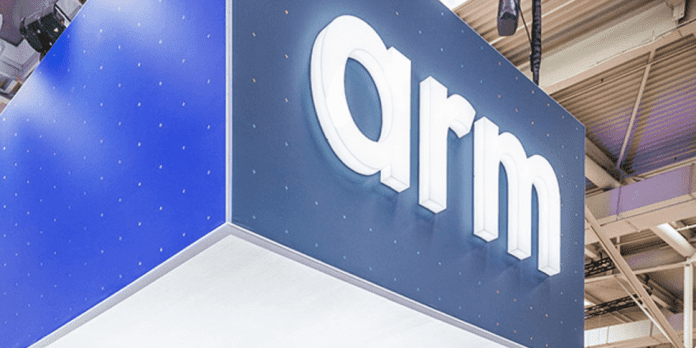On-device AI on minuscule IoT units will be the “new normal”, said UK-based Arm, as it unveiled a 480-times boost in edge processing performance with two new chip designs, pairing the latest in its Cortex-M line with a new micro neural processing unit (NPU).
The firm said the industrialists will be able to dispense with the cloud for heavy-duty data analytics, effectively, and keep artificial intelligence (AI) and machine learning (ML) processes on their premises, at the edge, and even on IoT devices themselves.
Its new Cortex-M55 processor and Ethos-U55 NPU will deliver a 480-fold leap in ML performance to microcontrollers, the company said. The Ethos-U55 is the first micro NPU for the Cortex-M line of silicon blueprints. The pair are geared to small, power-constrained IoT and embedded devices.
At the same time, Arm has unveiled IP (intellectual property), with toolchain support, to help hardware and software developers to riff on the new levels of on-device ML processing afforded by the Cortex-M55 and Ethos-U55 NPU duo.
Dipti Vachani, senior vice president and general manager for automotive and IoT at Arm, said: “Enabling AI everywhere requires device makers and developers to deliver machine learning locally on billions, and ultimately trillions of devices.
“With these additions to our AI platform, no device is left behind as on-device ML on the tiniest devices will be the new normal, unleashing the potential of AI securely across a vast range of life-changing applications.”
The parallel development of AI and 5G in industrial IoT setups, along with the miniaturisation and amplification of edge-based compute power, is driving innovation, and the scope of digital change.
“More on-device intelligence means smaller, cost-sensitive devices can be smarter and more capable while benefiting from greater privacy and reliability due to less reliance on the cloud or internet,” it said.
“By delivering this intelligence on microcontrollers designed securely from the ground up, Arm is reducing silicon and development costs and speeding up time to market for product manufacturers looking to efficiently enhance digital signal processing (DSP) and ML capabilities on-device.”
The Cortex-M55 is billed as the “most AI-capable” in the Cortex-M line. It delivers a 15-times uplift in ML performance and a 5-times uplift in DSP performance, compared to previous Cortex-M generations. The Cortex-M55 is based on the Armv8.1-M architecture. It features the company’s Helium vector processing technology, for enhanced DSP and ML performance.
For more demanding systems, it can be paired with the Ethos-U55, to achieve a 480-times increase in ML performance compared with Cortex-M processors. The Ethos-U55 uses advanced compression to save power and reduce ML model sizes, enabling neural networks that would typically require larger systems.
The likes of Amazon, Alif Semiconductor, Bestechnic, Cypress, Dolby, Google, NXP, Samsung, STMicroelectronics have committed to use the new platform designs. Arm partners have shipped 50 billion chips based on Cortex-M family.

